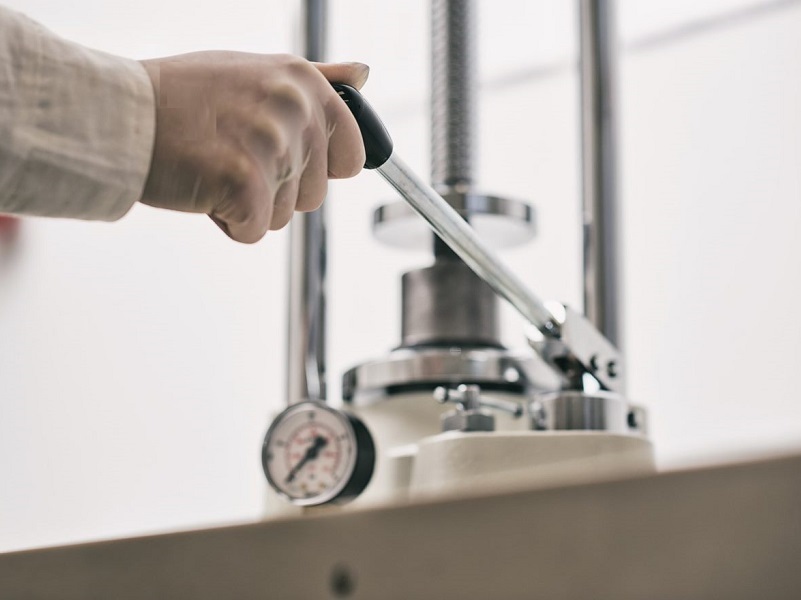
PATENT
ADVANTAGES OF PRESSURE POLYMERISATION
02.05.2023
text: dr Małgorzata Kłoskowicz
e-mail: malgorzata.kloskowicz@us.edu.pl
Patents of the University of Silesia
This article is part of a series presenting the results of research by scientists associated with our University, who are co-authors of over 600 inventions, utility and industrial models, and trademarks.
Researchers from the University of Silesia in Katowice have developed new ways to obtain three compounds that can be used for medical purposes. What the inventions have in common is the use of pressure polymerisation.
The first one is poly(γ-butyrolactone) (PGBL) – a water-insoluble and non-toxic polymer with interesting properties, thanks to which it can be used as a biomaterial. It not only has good mechanical properties, but is also characterised by a short degradation time. The methods of obtaining this compound used so far were inefficient and were associated with high costs and a multi-stage polymerisation process. Scientists from the University of Silesia have proposed a new method using high pressure. Thanks to this, the reactions taking place are accelerated and the control of the entire process is increased. The authors of the invention are scientists from the Faculty of Science and Technology of the University of Silesia: Andrzej Dzienia, PhD Eng., Paulina Maksym, PhD Eng., Magdalena Tarnacka, PhD, DSc, Assoc. Prof., Prof. Kamil Kamiński and Prof. Marian Paluch.
The second of the three compounds is a poly(1-vinyl-2-pyrrolidone) (PVP) homopolymer. It is a compound that is soluble in various aqueous solutions and has been approved by the European and Polish Code of Pharmacy, e.g. as a component of pharmaceuticals in the medical industry. It is used, for example, as an antidiarrheal agent due to the fact that it has the ability to adsorb acids or bases resulting from fermentation or putrefactive processes, respectively. Also in this case, the use of high pressure in the homopolymer production process allowed for greater control of the reaction course. The new method of obtaining this compound means not only the simplification of the entire process, but also the elimination of toxic initiators and organometallic catalysts. A patented method of obtaining poly(1-vinyl-2-pyrrolidone) was developed by: Andrzej Dzienia, PhD Eng., Paulina Maksym, PhD Eng., Prof. Kamil Kamiński, Prof. Marian Paluch, Magdalena Tarnacka, PhD, DSc, Assoc. Prof., and Grzegorz Garbacz, PhD, DSc.
The third patented invention is a method of pressure polymerisation of ε-caprolactone (ε-CL). Ε-caprolactone is a monomer from which scientists can obtain polycaprolactone – a biodegradable polymer used e.g. for the production of surgical threads and stents or bone implants. It is also used to build a substrate for tissue culture. Having that in mind, it is no surprise that scientists are looking for new, more efficient and safer methods of obtaining it. As with the previous two inventions, the use of elevated pressure again proved to be an effective solution. In combination with a non-toxic organocatalyst, it was possible to improve the course of the ε-caprolactone polymerisation process. The solution, which has been covered by patent protection, is the result of the work of: Andrzej Dzienia, PhD Eng., Paulina Maksym, PhD Eng., Magdalena Tarnacka, PhD, DSc, Assoc. Prof., Prof. Kamil Kamiński, Agnieszka Talik, MSc and Prof. Marian Paluch.
Photo by the University of Silesia





